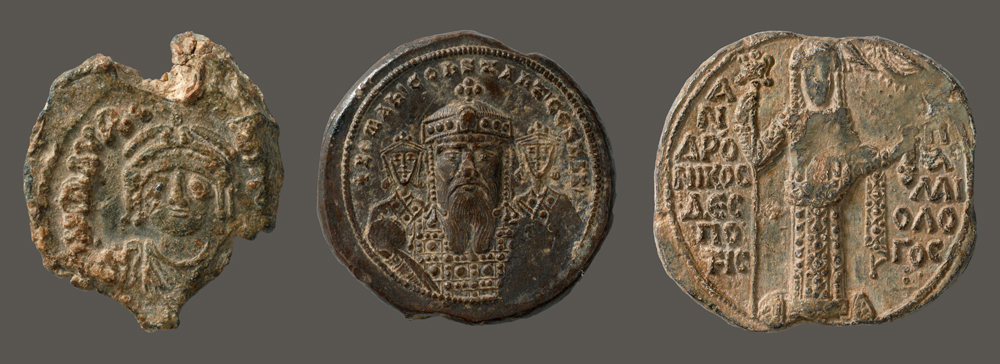
In former times, when the constitution followed a different system, the order of affairs was also differently arranged. . . . Today, however, everything depends on the wisdom of the emperor, and all things are supervised and managed, with the aid of heaven, by the providential care of his wisdom.
Novel 97 of Leo VI
For over a thousand years the Byzantine Emperor sat in his palace, ruling over the empire as God’s regent on earth. His was the ultimate authority. The emperor was the font of all law, granter of titles and offices, distributor of largess, master of the Church, commander of the army, head of the bureaucracy, and supreme judge. The decisions of the individual who sat on the throne had repercussions throughout the Byzantine world and far beyond. Decrees, letters, judgments, and commands left Constantinople every day signed by the emperor in red ink and secured with the imperial seal. These seals not only protected and authenticated imperial documents, they also spread the emperor’s image and served as imperial propaganda. It is no accident that while one emperor chose to be depicted as a soldier, another chose to be shown as a civilian. Although Christ accompanies one emperor, another might choose St. Constantine, or the Mother of God, or perhaps simply the cross. Was his title Greek, basileus, or Latin, augustus? Did he want to emphasize his family as an imperial asset or assert his position as autokrator, the sole ruler of God’s empire on earth? The designs of the imperial seals are interesting for more than their artistic value, they provide an insight into the minds and policies of the rulers whose image they bore; they tell us not only how they wished to be viewed by the recipients of their letters, but also how they viewed themselves. Imperial seals, with their titles, images, and projection of divinely sanctioned authority, show the blend of Roman, Hellenistic, and Judeo-Christian ingredients that went into the Byzantine imperial recipe.
We hope that after visiting this online exhibition you will be inspired to explore the online catalogue of Byzantine seals in the Dumbarton Oaks collection. This project was begun in 2010, and is continually updated as more seals from our collection of 17,000 are catalogued.






